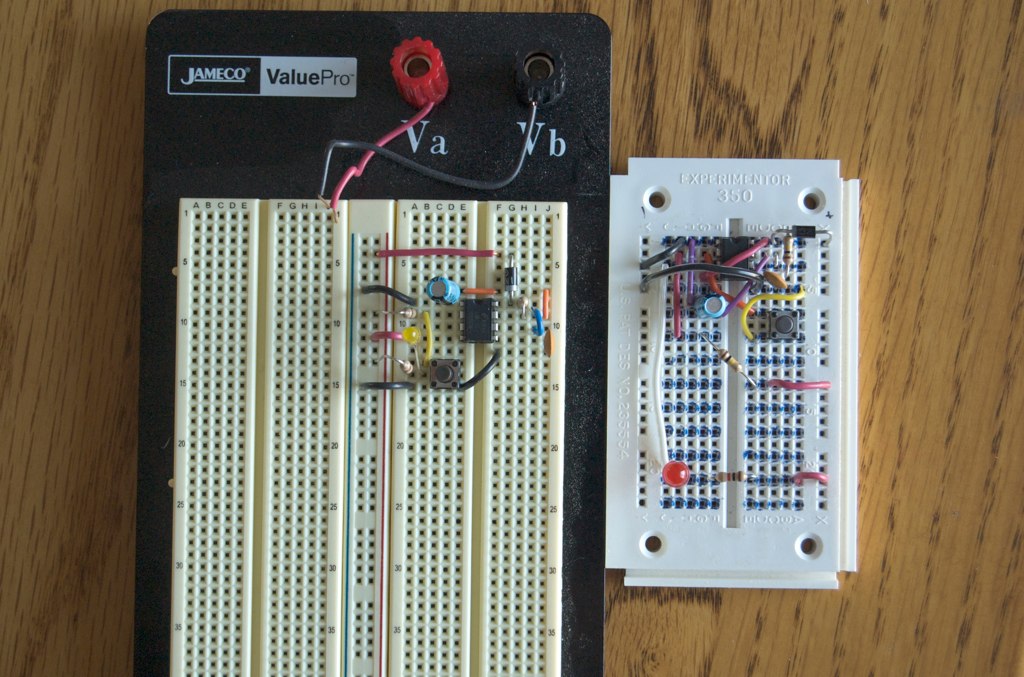In the summer of 2009, working from a single 6502, we exposed the silicon die, photographed its surface at high resolution and also photographed its substrate. Using these two highly detailed aligned photographs, we created vector polygon models of each of the chip's physical components - about 20,000 of them in total for the 6502. These components form circuits in a few simple ways according to how they contact each other, so by intersecting our polygons, we were able to create a complete digital model and transistor-level simulation of the chip.
Showing posts with label logic design. Show all posts
Showing posts with label logic design. Show all posts
Sunday, September 19, 2010
Visual 6502 Processor Simulation
Greg James, Barry Silverman and Brian Silverman from Visual6502.org have been working for the last year on a transistor-level visual simulation of the 6502 microprocessor. Their work is incredibly detailed and very interesting. The 6502 design is a classic processor, and very important in computer history as it was used in the Apple I & II, Commodore, Atari and Nintendo computing systems.
Labels:
algorithms,
circuits,
computing,
logic design,
machines,
photography
Saturday, April 3, 2010
A Real Turing Machine
Mike Davey presents his hand-built Turing Machine. The machine uses a Parallax Propeller chip for mechanical control, but actual computation is executed using the tape reel.
You can get more details about the construction of the machine at Mike's Site.
My goal in building this project was to create a machine that embodied the classic look and feel of the machine presented in Turing’s paper. I wanted to build a machine that would be immediately recognizable as a Turing machine to someone familiar with Turing's work.
Although this Turing machine is controlled by a Parallax Propeller microcontroller, its operation while running is based only on a set of state transformations loaded from an SD card and what is written to and read from the tape. While it may seem as if the tape is merely the input and output of the machine, it is not! Nor is the tape just the memory of the machine. In a way the tape is the computer. As the symbols on the tape are manipulated by simple rules, the computing happens. The output is really more of an artifact of the machine using the tape as the computer.
Practice Makes Perfecgt
From Flickr user mrbbking:
Two copies of the same circuit. The one on the right was done first, and is a pretty good rat's nest, if I do say so myself. The one on the left was built based on the other one, but with an eye toward clarity. Much easier to see what's going on! I guess that figuring out the layout based on a schematic is a skill that needs practice.
Labels:
breadboarding,
circuits,
logic design,
rapid prototyping,
tools
Wednesday, March 3, 2010
Kohctpyktop: A logic design challenge
Feeling nostalgic for those frantic days in the digital design lab? Wish there were perhaps a game that put you in the place of an engineer, trying to design new ICs to meet the goals of some unspecified organization? Want to get your SI on? No idea what I am talking about?Kohctpyktop via Make
Well then, let me introduce you to Kohctpyktop: engineer of the people, by Zachtronics Industries. It's the first game I've ever seen where you have to design integrated circuits as a challenge, sort of like pipe dream for electrical engineers.
Labels:
electrical engineering,
games,
logic design,
Maker
Subscribe to:
Posts (Atom)

